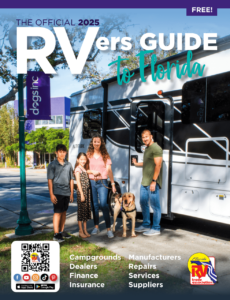RV Terms Defined for First Timers
Buying your first RV is nothing like buying your first car. There is a greater learning curve involved. Veteran RVers and dealers are knowledgeable, but sometimes talking to them is like talking to the genius in math class. They are so smart, their explanation sounds way more complicated than it needs to be. Here is a quick cheat sheet of RV terms you need to know.
Axle Ratio:
The number of rotations of the drive shaft (on rear-wheel-drive vehicles) or output shaft (on front-wheel-drive vehicles) required to rotate the drive wheels one full turn. For example, on a vehicle with an axle ratio of 4.1:1, the driveshaft would have to rotate 4.1 times in order to rotate the drive wheels once.
Higher axle ratios result in added torque for increased power for acceleration desirable when towing a trailer.
Black Water Tank:
The tank in which black water waste (toilet waste) is held until a dump station is available.
Crossover:
A hose that connects the air valves of inner and outer tires on dual wheels. The crossover equalizes the air pressure between the two tires.
Curb Weight:
The weight of an RV with standard equipment and a full tank of gas, but excluding goods, driver and passengers.
Duallies:
A slang term applied to the dual wheels found on the drive axle of most motorhomes.
Diesel Puller:
The term for a motorhome with the diesel engine mounted in the front of the vehicle. Also known simply as a Puller.
Diesel Pusher:
The term for a motorhome with the diesel engine mounted in the rear of the vehicle. Also known simply as a Pusher.
Exhaust Brakes:
Diesel engines have poor compression slowing due to the fact that the air inlet to the engine is wide open at all times – there is no butterfly valve as is found in gasoline engines. To get around this problem several manufacturers supply diesel exhaust brakes. They consist of a heavy-duty butterfly valve mounted immediately following the turbo charger in the exhaust system. An electric solenoid or a pneumatic cylinder actuates the butterfly valve. It is normally in a position so that it is parallel to the flow of exhaust gases and presents little restriction to the exhaust flow. When actuated, the butterfly is closed to almost completely block the path of the exhaust gases. This forces the engine to act like a large air compressor and provides substantial braking action.
Gross Combined Weight Rating (GCWR):
The maximum allowed weight for a vehicle with all of its contents and passengers along with the weight of any towed vehicle and its contents. Known in some RVing circles as CGVWR.
Torque:
A turning or rotational force. Generally speaking, diesel engines produce higher torque than their gas cousins, making them desirable for powering heavier motorhomes and for towing large (heavy) trailers.
Wheelbase:
The distance between the center of the steer axle and drive axle on single axle vehicles. On vehicles with a tag axle, the measurement is taken from the center of the steer axle to a point midway between the centers of the tag and drive axles.
I found this list of RV terms and definitions at RvForum.net visit their site for the full version of the list and definitions. Do you have a question about RVs? Ask in the comments below.

